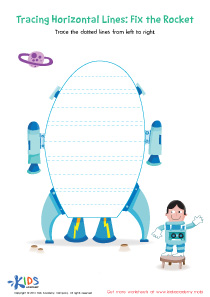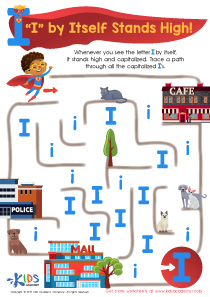Normal Missing Letters Worksheets for Ages 3-9
5 filtered results
-
From - To
Discover our engaging Missing Letters Worksheets designed for kids ages 3-9, ideal for building foundational literacy skills. These fun, educational activities help young learners master the alphabet by challenging them to identify and fill in missing letters. Perfect for both classroom and home use, our worksheets support letter recognition, sequencing, and handwriting practice. Crafted by educational experts, each worksheet aligns with early learning standards, ensuring exciting and effective learning moments. Boost your child's confidence and make learning the alphabet a joyful experience with our Missing Letters Worksheets at Kids Academy!
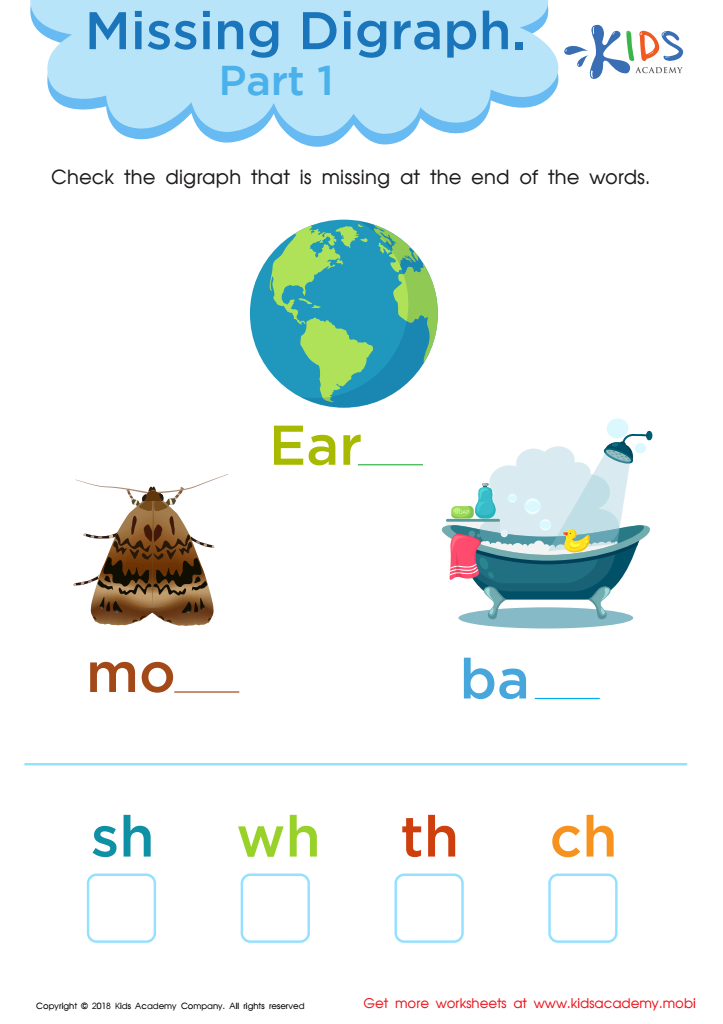

Missing Digraph: Part 1 Worksheet
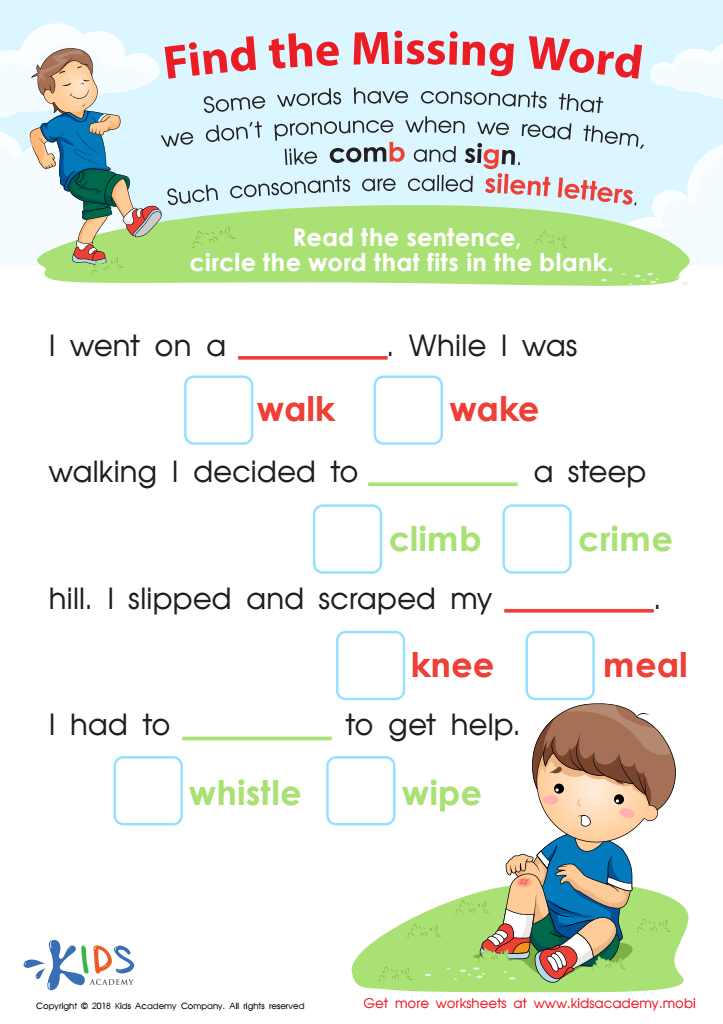

Find The Missing Word Worksheet
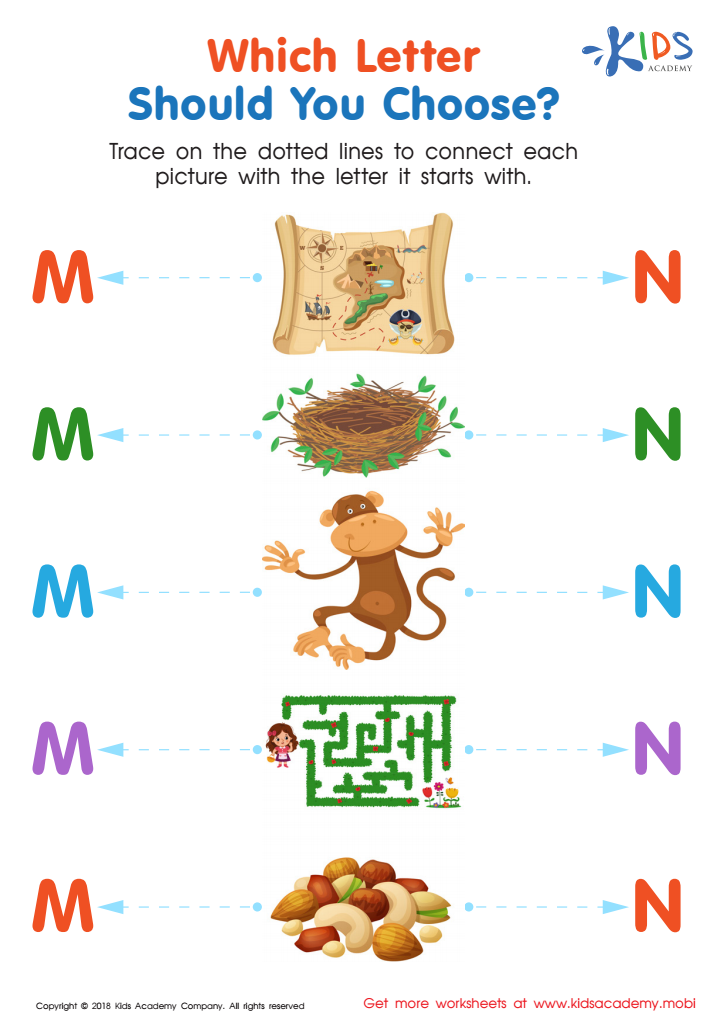

Which Letter Should you Choose? Worksheet
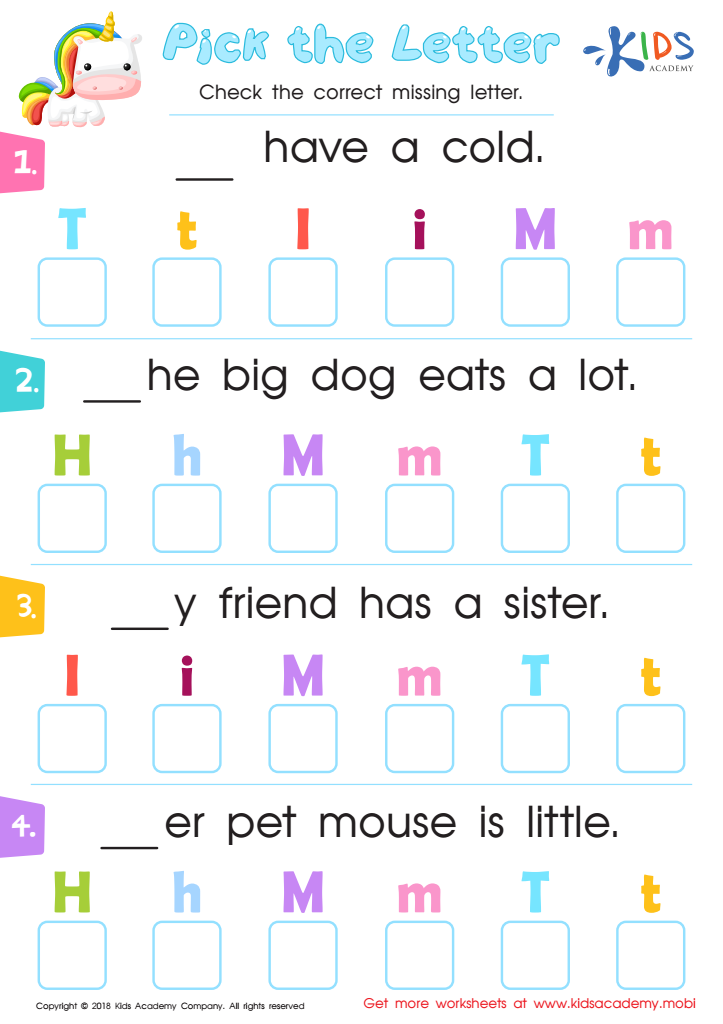

Pick the Letter Worksheet
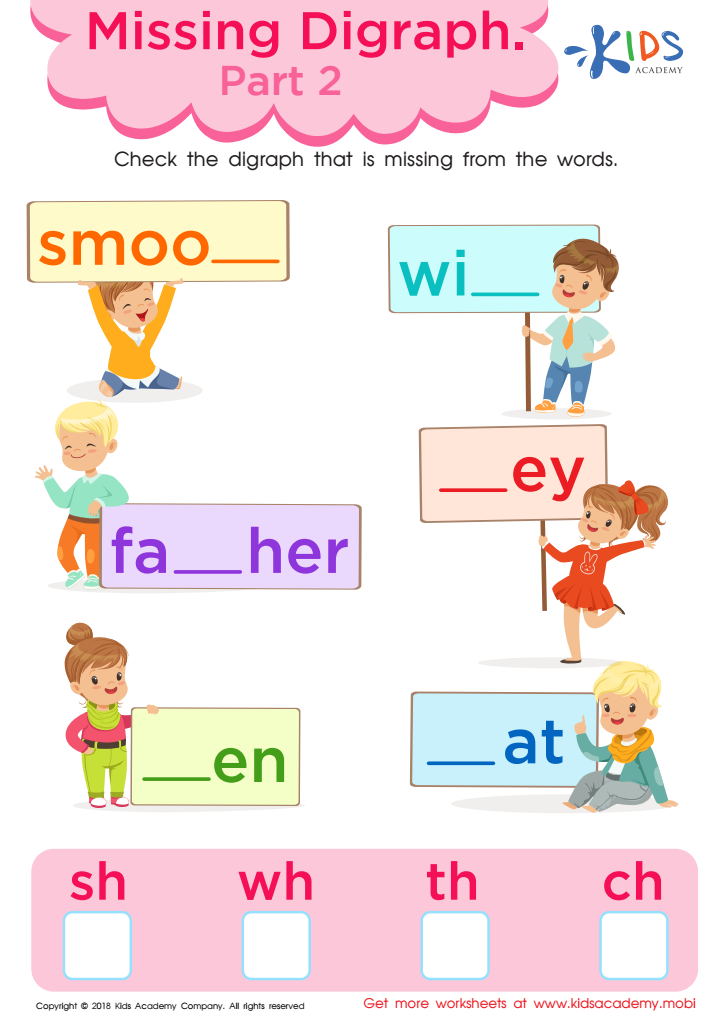

Missing Digraph: Part 2 Worksheet
Normal Missing Letters activities, where children fill in the blanks within words or sentences, hold significant educational value for ages 3-9. This formative period is crucial for language acquisition and literacy development. These exercises enhance phonemic awareness, enabling children to recognize and manipulate sounds in words, which is foundational for reading proficiency.
When children engage in Missing Letters tasks, they develop critical skills such as spelling, decoding, and word recognition. This helps them understand letter-sound relationships and strengthens their ability to segment sounds within words, improving both writing and spelling accuracy. Additionally, these activities promote cognitive skills like pattern recognition and memory, honing the ability to identify common linguistic structures and familiar word patterns.
Moreover, these exercises support vocabulary growth as children encounter new words and expand their understanding of word context. Engaging in such activities early instils a love for language, fostering confidence and motivation to read.
For teachers and parents, monitoring and facilitating Normal Missing Letters activities means supporting foundational literacy skills in a fun and interactive way. Early intervention and consistent practice can mitigate future learning difficulties, setting children on a path to academic success. Ensuring that literacy skills are developed appropriately is crucial for effective communication and overall educational achievement.
 Assign to My Students
Assign to My Students





